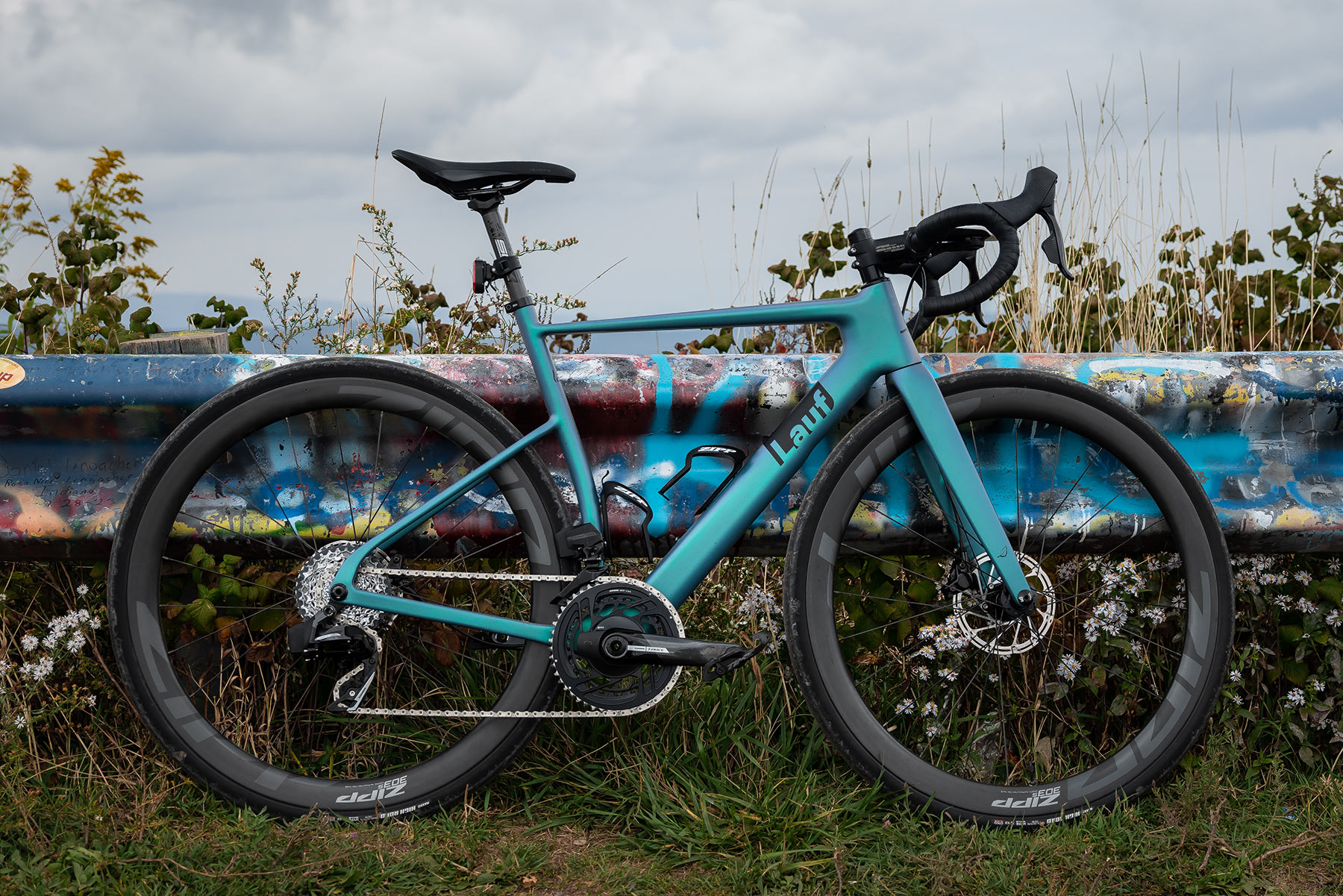The Icelandic brand that started off with a wacky leaf-spring fork has come a long way, and the new Lauf Úthald road bike takes everything they learned about making a fast-yet-stable gravel bike and brings it to the tarmac.
The goal was to make a bike that didn’t just feel fast, but was, actually, fast. More precisely, helped you ride faster, not just feel like it was fast.
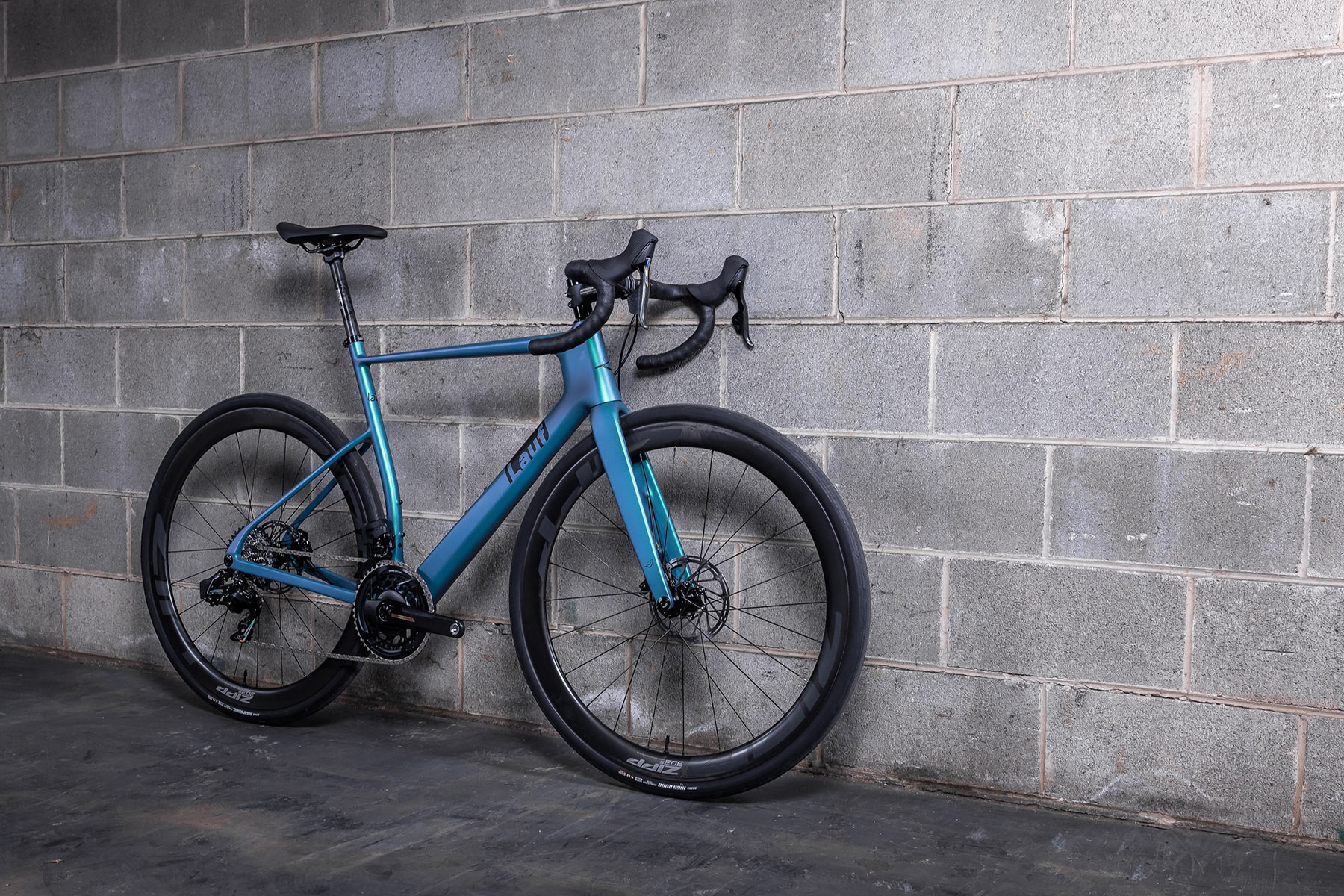
What’s the distinction? They say most road bikes are built for pro riders who, as much as we hate to say out loud, are very different than you and I. Their needs and wants are different. The razor-sharp handling pros tolerate doesn’t work as well for most riders, and Lauf argues that the sometimes twitchy handling actually makes you slower because it’s not confidence inspiring. It “feels” fast, but it doesn’t make you fast.
So they decided to do something different, as they always do.
Lauf’s problem with road bikes
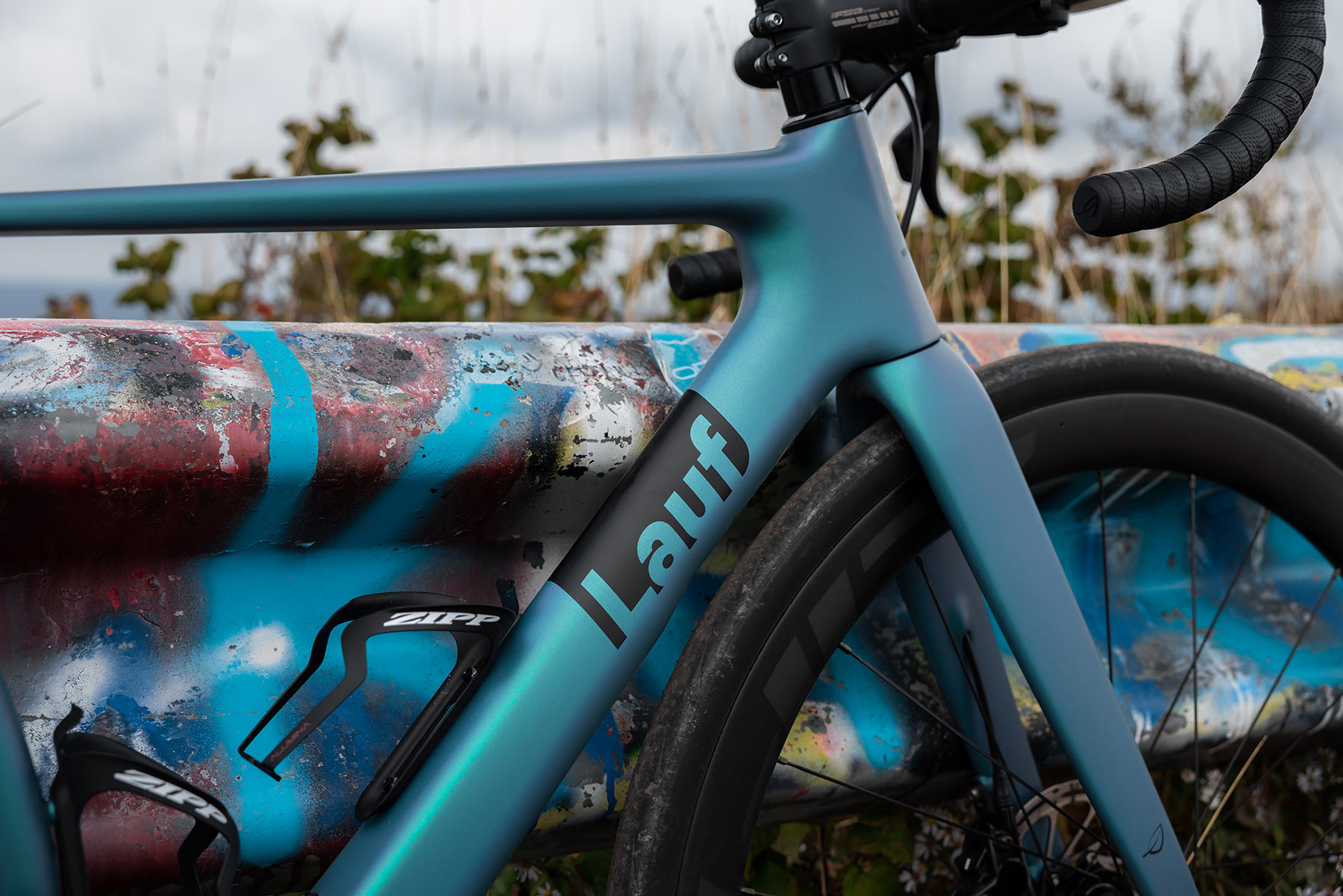
Bear with me, this is a lot of text…pictures come later. Lauf’s top priority was a bike that had ultra-stable handling. It still needed to steer quickly enough, but without the nervous handling that comes from a steeper head angle. Looking at the current road bike market, they found three things:
- Traditional road bikes’ head angles were steep, with larger frame sizes getting even steeper.
- Fork trail was short, especially compared to gravel and MTB.
- No one could really explain why this was the case.
What they found was that these “standard” geometries and designs were done seemingly because that’s just the way it had always been. The steeper angle and shorter trail makes the bike steer quickly, which makes it feel like a quick bike. But it didn’t actually translate to real-world speed, especially as you tried to go faster.
“Why wouldn’t you make race bikes more stable?” asks Lauf co-founder and chief designer Benedikt Skullason. “It descends better, and there’s no downside to all-around handling or performance. The only “downside” (and those are intentionally sarcastic “air quotes”) would be the slow speed parking lot steering test.”
“I think the reason other brands use such steep steering angles on their bikes is because they want them to “feel” fast by having quick, twitchy steering. That gives people the perception that their bike is quick, but in reality it’s making them slower because they feel less confident on the descents.”
Indeed, Lauf says a steeper head angle makes a bike that takes more concentration to hold a line and keep steady as you go faster and faster. In contrast, look at the slacker head angles of gravel bikes (and MTB), which create a longer trail figure. The longer your fork’s trail, the more stable a bike is at speed.
The problem with typical road bikes’ steeper angles gets worse with larger frame sizes. Most brands’ smaller sizes use slacker head angles to push the front wheel forward to reduce toe overlap, but get steeper as sizes increase. Which means taller riders with higher centers of gravity get the least-stable bikes. With the Úthald, Lauf keeps the head angle constant across all frame sizes.
Slacker head angle versus less fork offset
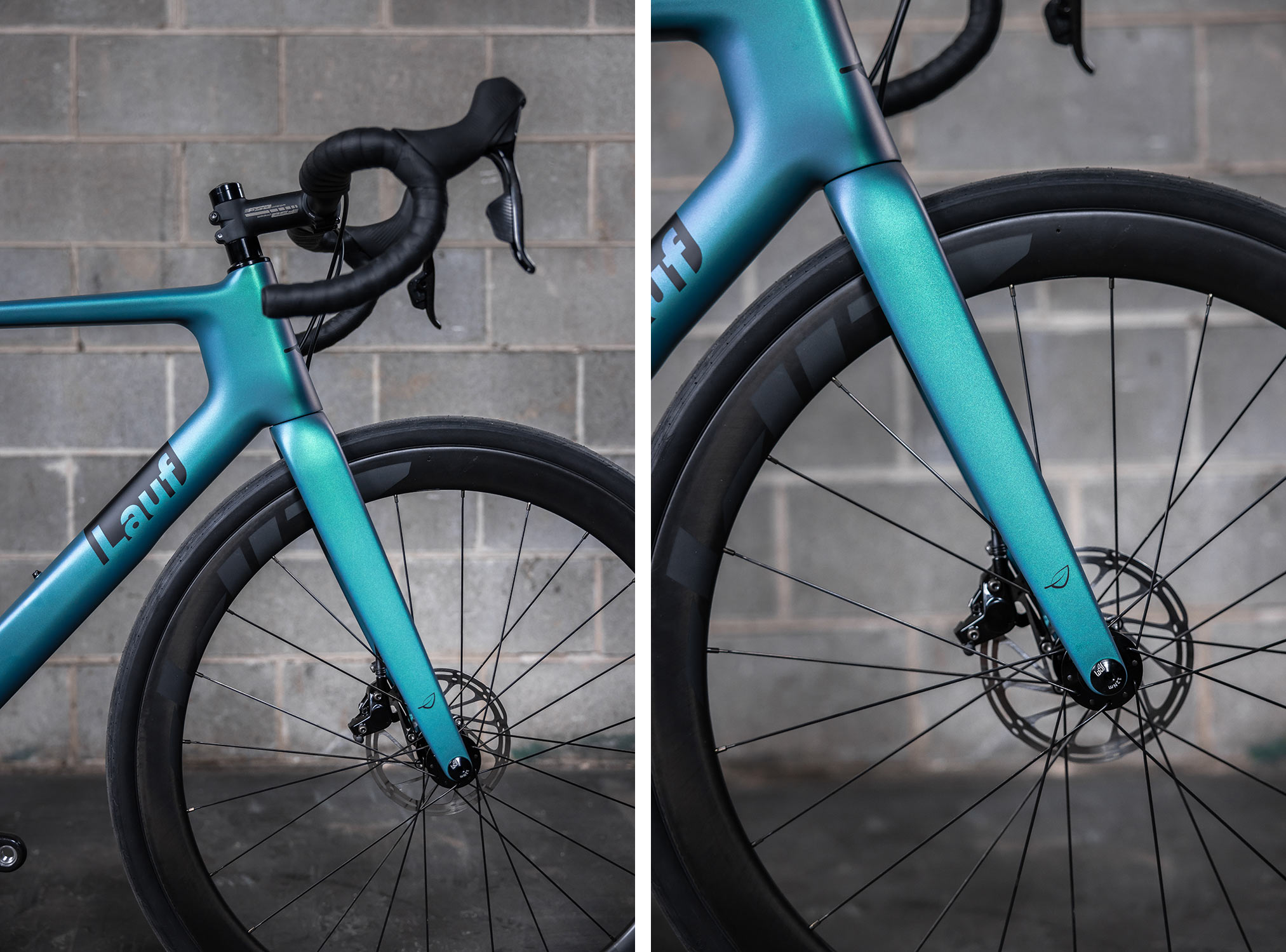
Improved stability is mostly about the fork’s trail. So, technically they could have kept a more traditional head angle and given the fork less offset (or rake) to achieve the desired trail. But that would have put the front wheel too close to the cranks and created toe overlap issues. And it would have created a shorter wheelbase, which would have hurt overall stability.
Why not go even slacker?
Because, and it’s marginal, as you increase the wheelbase, the bike gets longer, so you have more total turbulence and drag. Also, a too-long wheelbase would have too-slow handling.
Ultimately, they wanted to create a bike that fits like a race bike, because it’s meant to be a fast bike, but is stable and comfortable like an endurance bike, except even better. The Úthald will have UCI certification, and they hinted that there’s a good reason for that.
Lauf Úthald design philosophy
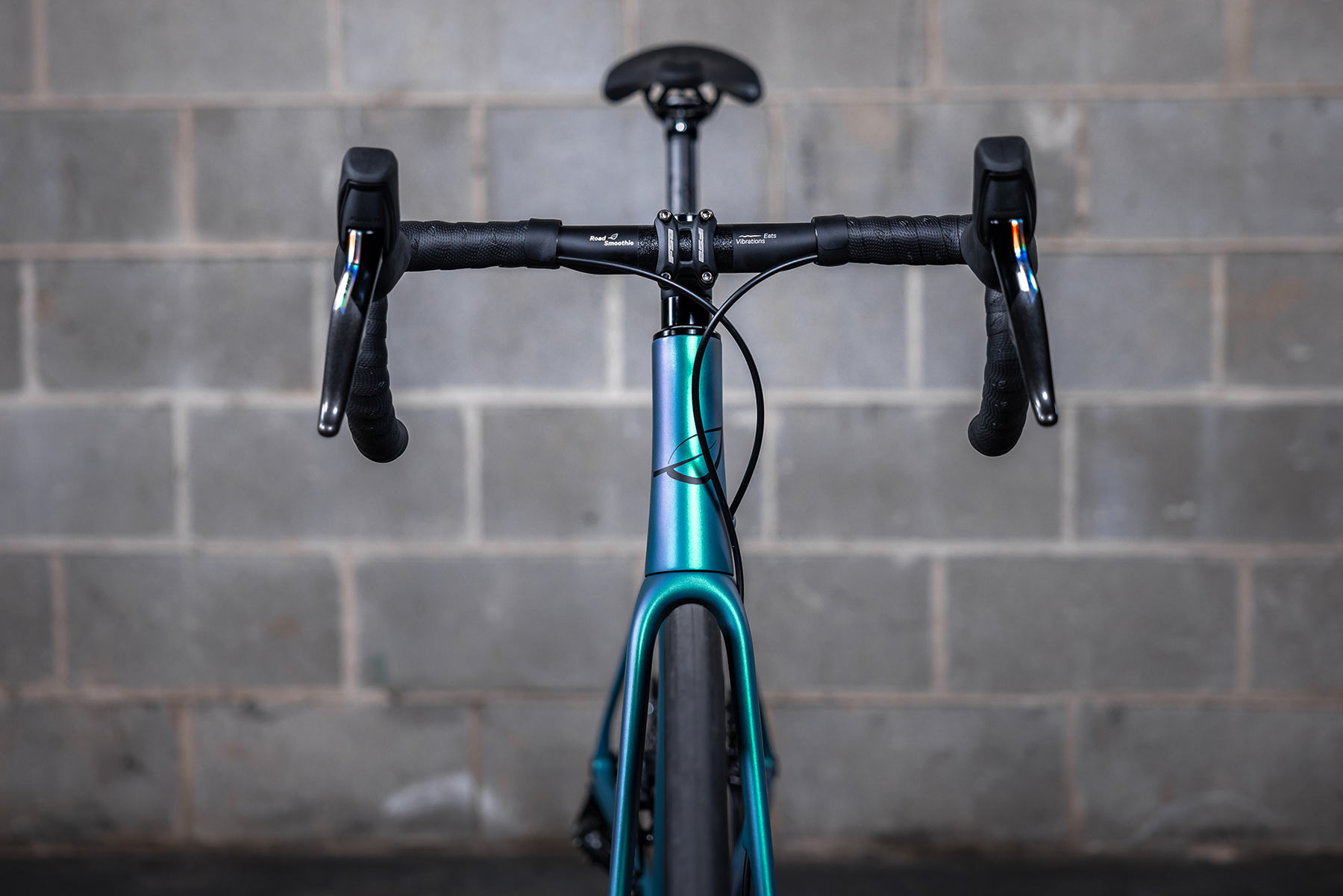
When the Seigla gravel bike debuted, it took a more aggressive design tone than the original True Grit. The Úthald sticks with that design language but adds road-specific shapes and details.
The front triangle has some aero nods (though it hasn’t been wind tunnel tested). The headtube is elongated, and the downtube dips slightly behind the front wheel to follow its curve, then flares to send air around the water bottles. That latter shaping is a big departure from their gravel bikes, and it adds some sophistication to the design.
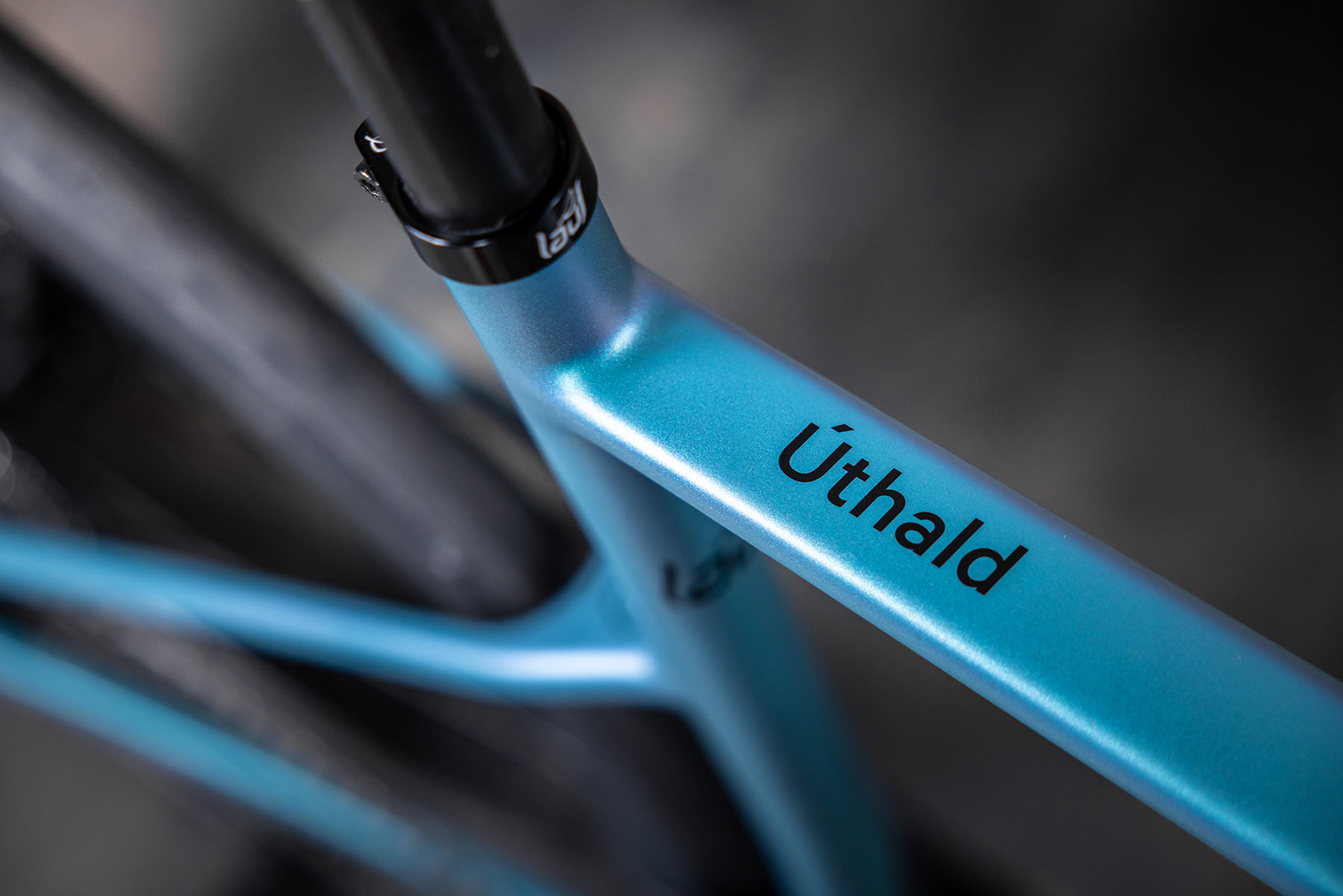
The rear end is shaped for comfort, though the dropped seatstays are more aerodynamic than if they went all the way up to the seat clamp junction.
But that dropped seatstay design is really there for comfort. By driving rear wheel impact forces into the middle of the seat tube, that junction acts like a pivot point, letting the seat tube and 27.2 seatpost flex. And because of the seat tube’s offset and angle, it flexes more downward, so it feels more like suspension. It doesn’t flex as much as the Seigla, but enough to gently mute imperfections in the road and damp vibrations.
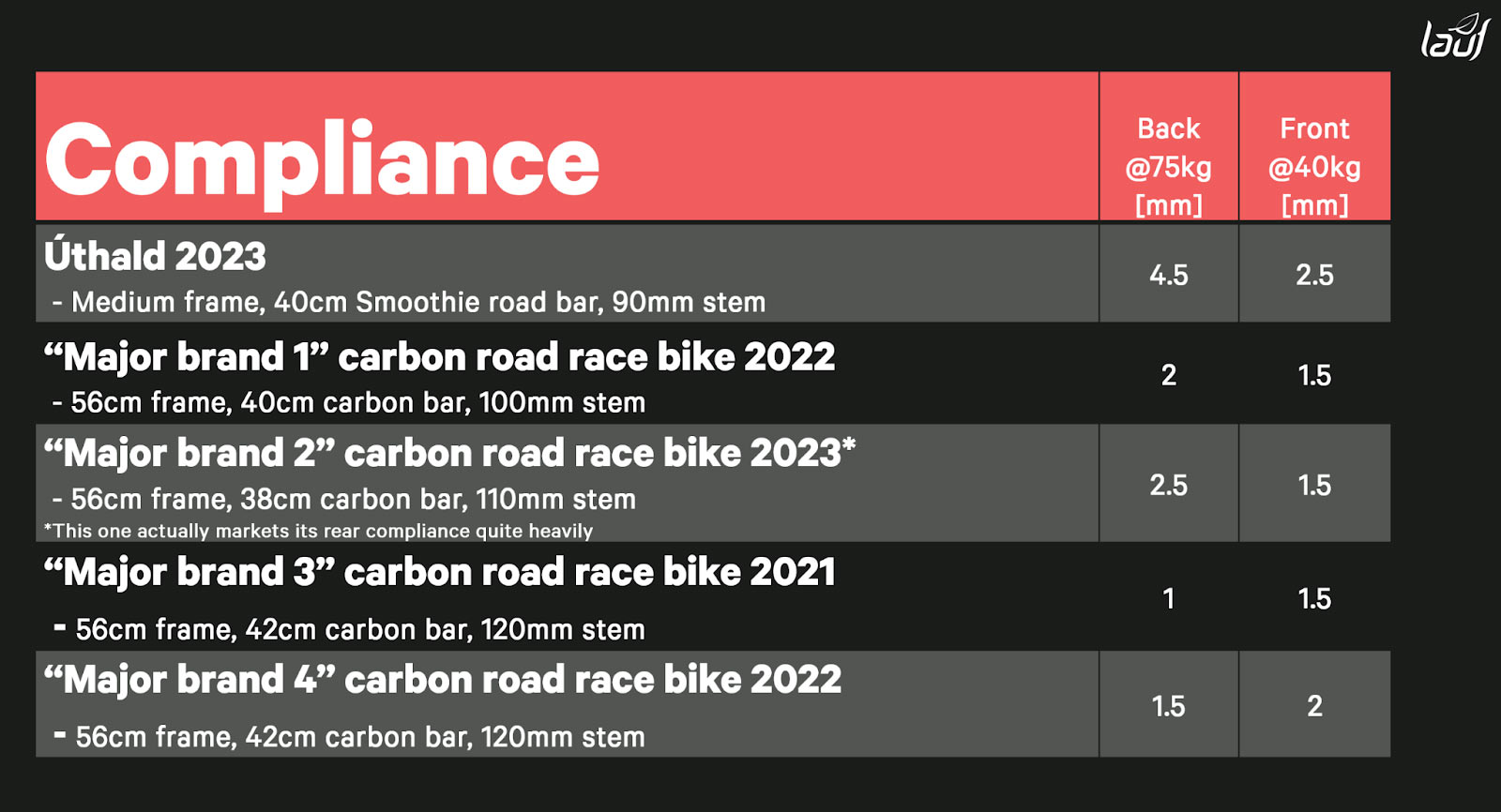
They claim it provides ~4.5mm of “sag” under a 75kg (165lb) rider, and can flex up to ~15mm total. With the same test, it shows more ability to sag than competitor’s bikes that add heavier pivot and other hardware. That’s about the same compliance you get from your tires, so it adds up to a lot of comfort. Bonus points for using a standard seat clamp, too. Here’s how that comparison looks as percentages:
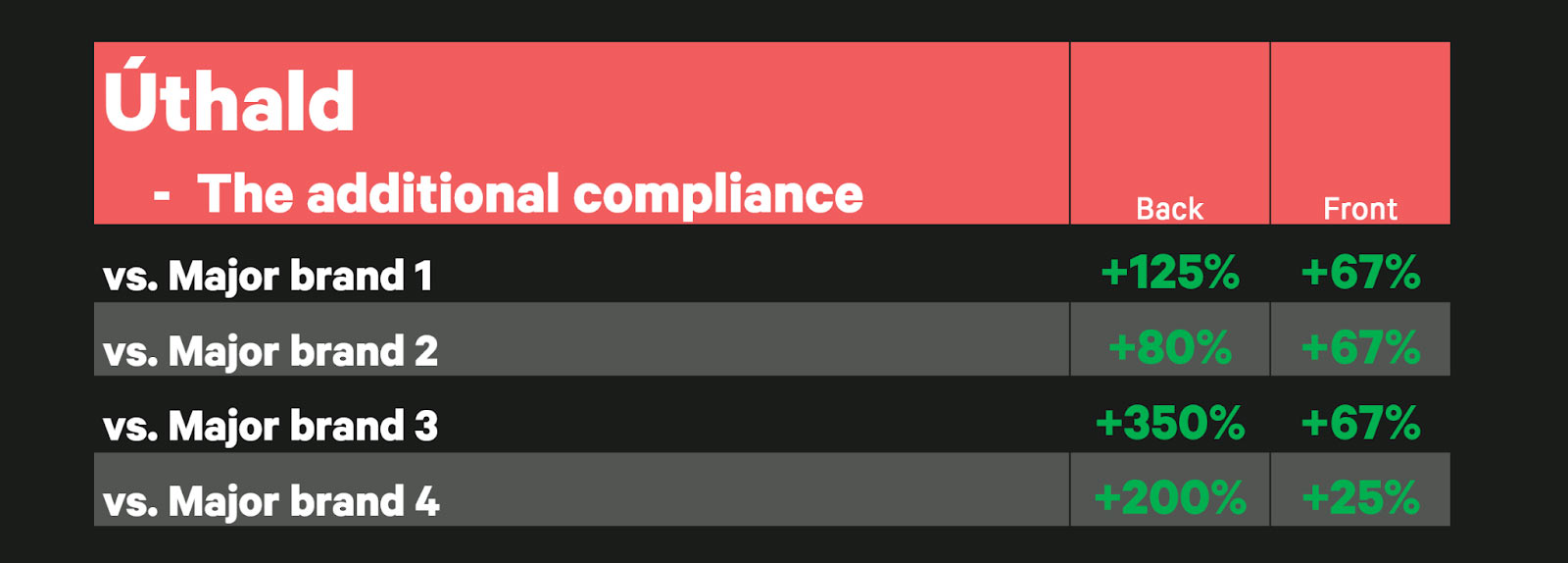
Up front, it has a traditional rigid fork, but gets a new Road Smoothie carbon handlebar with 2.5mm of “sag” with a 40kg (88lb) load. Like their Smoothie gravel bar, which is excellent, it uses impact-resistant S2 glass fibers in the central portion to allow some flex and better vibration damping.
The Road Smoothie handlebar (270g for 40cm) is shaped differently, with rounded sections creating an ergonomic platform. For now, it only comes in 38/40/42cm widths, which some may consider narrow, but many brands are running narrower bars now to boost aerodynamic claims. Speaking of…
Is it Aero?
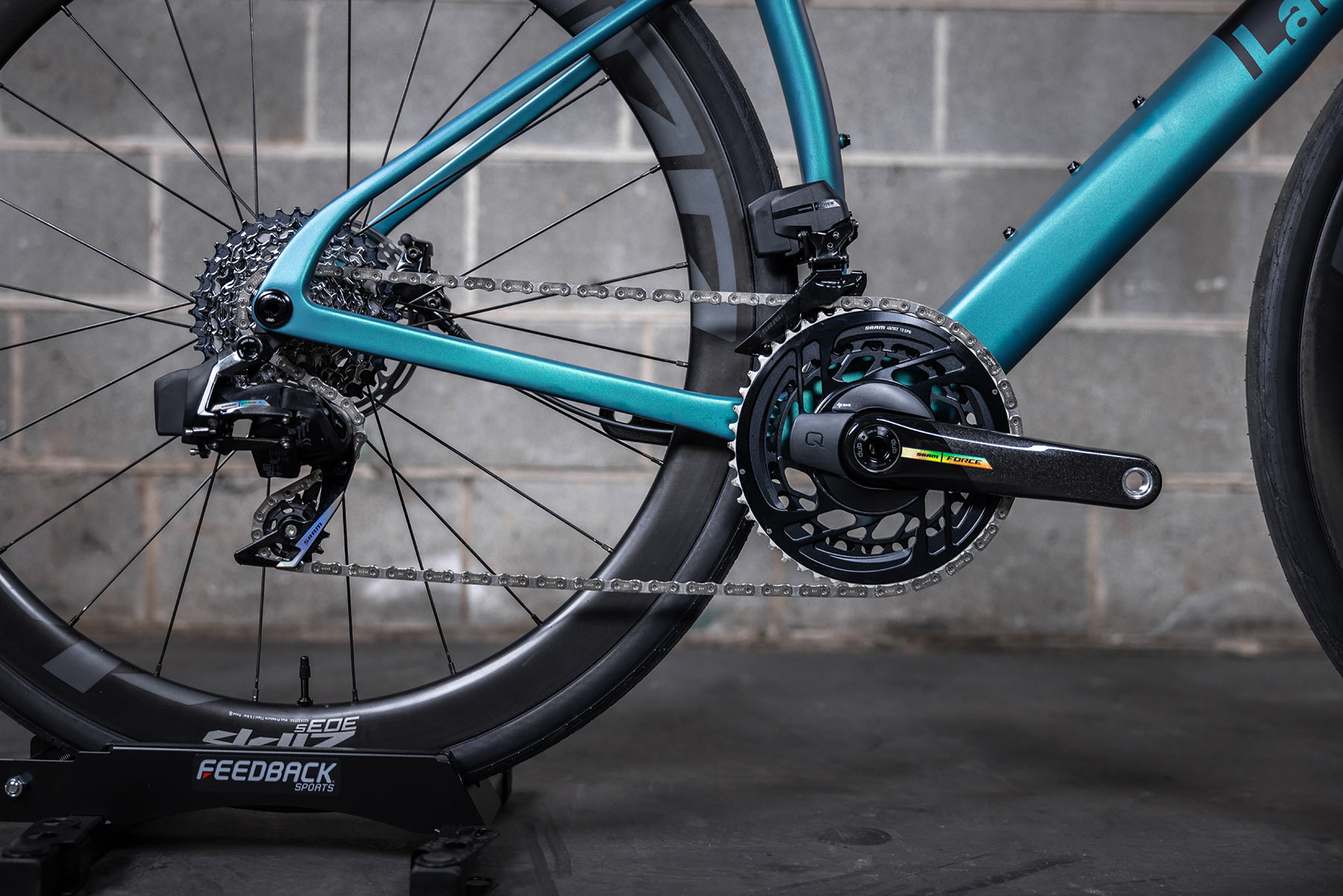
Yes, basically, but not for the reasons other brands are spouting. They’re not using stealth routing. The brake lines run internally, but enter on the downtube and fork crown, so there’s a tiny bit of hose exposed to the wind, but they can run a narrower upper headset and keep the head tube slimmer than on bikes needing a 1.5″ upper bearing to make room for hoses, so that’s a wash. It also makes the bike easier to adjust if you need to swap stems or change stack height.
Lauf is only spec’ing SRAM wireless groups, though there are ports for Shimano Di2 wires leading to the derailleurs. You could also run Campy’s new Super Record Wireless group. So, no added drag here. And, by eliminating extra ports and cable housing tunnels inside the frame, they saved 50g. There are tunnels for the brake hoses, though, so they won’t rattle.
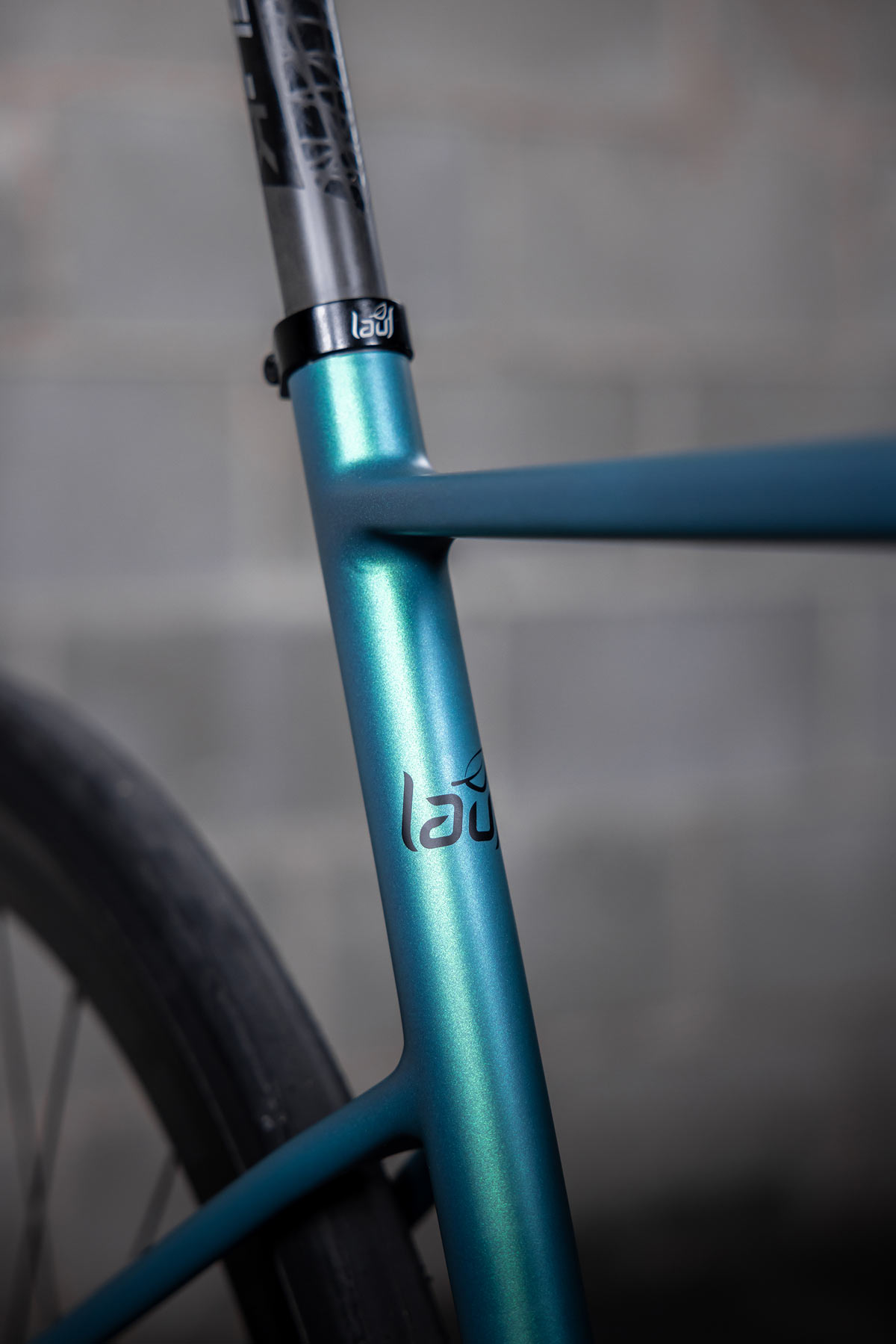
There’s also the aforementioned “generally aerodynamic” shapes of the fork legs and head- and downtubes, too. The bigger picture Lauf looked at was the credibility of aero claims from others, mainly that the claimed reductions in drag occur at superhuman speeds. How many of us actually sustain 45km/h (28mph), even when drafting?
Yet that’s the number frequently used. Since drag increases by a multiple of three as speed increases, a claimed 8w savings is more like 2w at speeds most of us are riding. So, Lauf opted out of extreme shaping and internal routing to focus on ride quality and ease of ownership. And if it’s easier to adjust your fit to get you in a more aero position, you’re more likely to do it, which will likely save more watts.
Lauf Úthald tech details and specs
While a lot of road bikes are adding more tire clearance, many are only upping the spec to 28mm tires. The Úthald comes with 700×32 tires but will fit 35mm tires, and it’s tubeless ready. That lets you run lower pressures for more comfort and traction, and puts more rubber on the road for better grip.
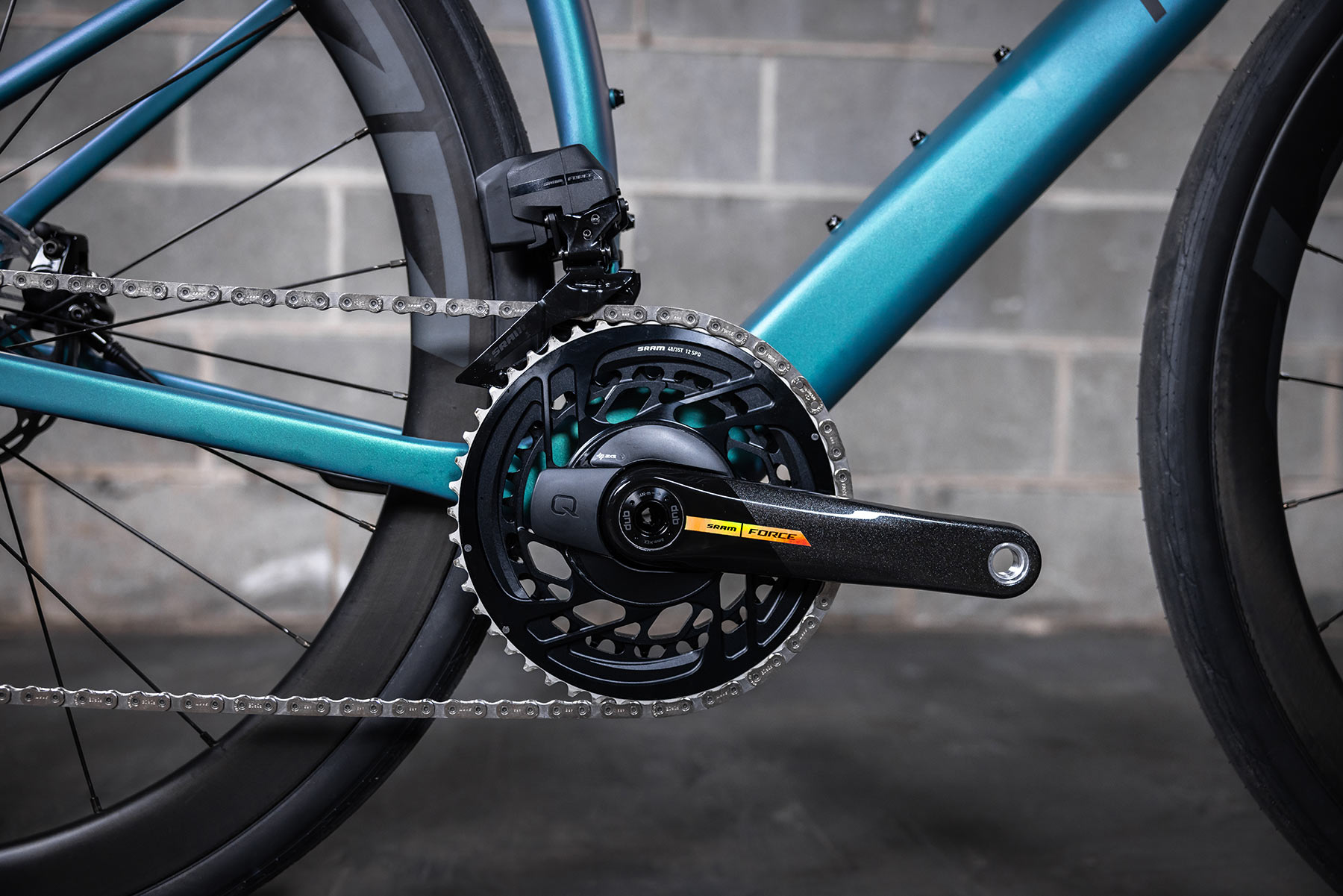
It also comes with crank-based power meters on every build.
While they built the front for stability, the rear end keeps ultra-short chainstays, just 405mm. The seat tube lets the rear wheel tuck in, and that gives the bike snappy acceleration and keeps the wheelbase in the right zone for high performance handling.
They stick with a proven BSA threaded bottom bracket. Like the standard internal brake routing, this makes the bike easier to service and more reliable.
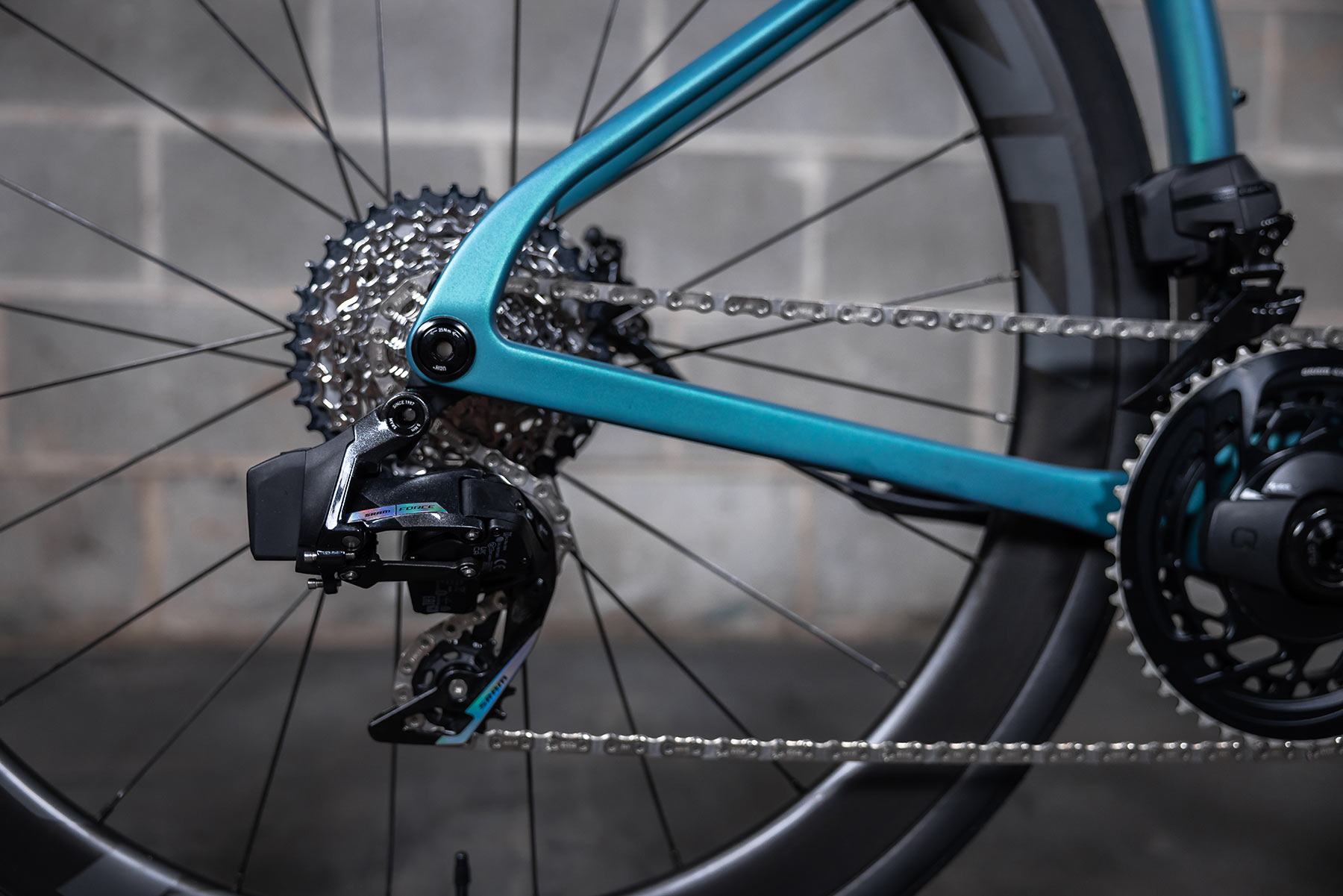
Like the Seigla, the frame uses standard modulus fibers. Lauf says high-mod fibers are lighter and stiffer, but they’re also extremely brittle. The standard modulus fibers handle impacts and stresses better, and flex better, which lets them make the bike more comfortable.
The frame is 985g (claimed, size M), and the fork is 365g (claimed), both fully painted without hardware. So, they’re not heavy, especially considering the paint adds ~130g (their claim) to the frame and ~20g to the fork. So, really, it’s a ~860g frame, which is pretty darn good.
Geometry
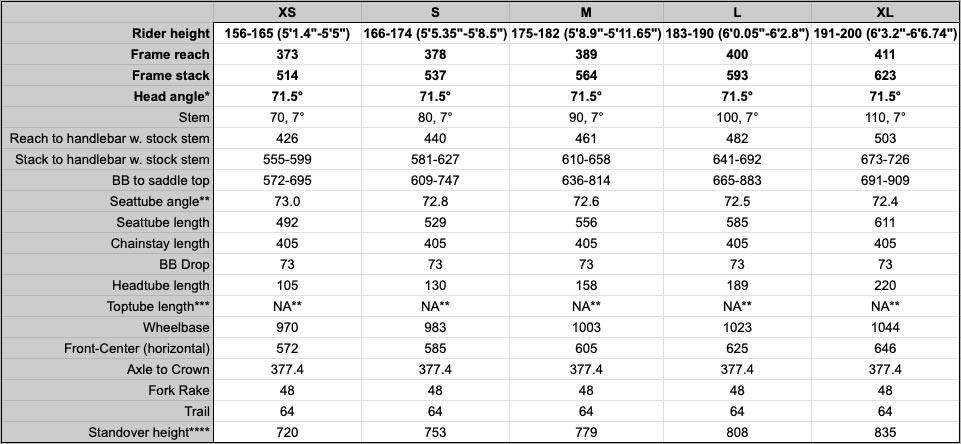
The 71.5º head angle carries across all five frame sizes, as does the 64mm trail figure. To put that into perspective, here are a couple of popular models specs (lower head tube angle is slacker, higher trail is more stable):
- Specialized Tarmac SL8: 70.5º to 73.5º range, 71mm to 55mm trail
- Specialized Roubaix SL8: 69.3º to 73º range, 76mm to 57mm trail
- Trek Madone Gen7: 72.1º to 73º range, 68mm to 56mm trail
- Trek Domane Gen4: 71º to 72º range, 61mm to 59mm trail
- Scott Addict RC: 70.5º to 73.3º range, trail not listed
- Cannondale Synapse 2022: 71.3º to 73.4º range, 59mm to 56mm trail
Some brand’s smaller frame sizes are slacker, with more trail, sometimes a lot more. What’s impressive about the Úthald is that Lauf could keep it consistent across a range of frames that will fit riders from about 5’1″ up to 6’6″, and that it’s slacker and with more trail even than some brand’s endurance-oriented bikes.
Pricing & options
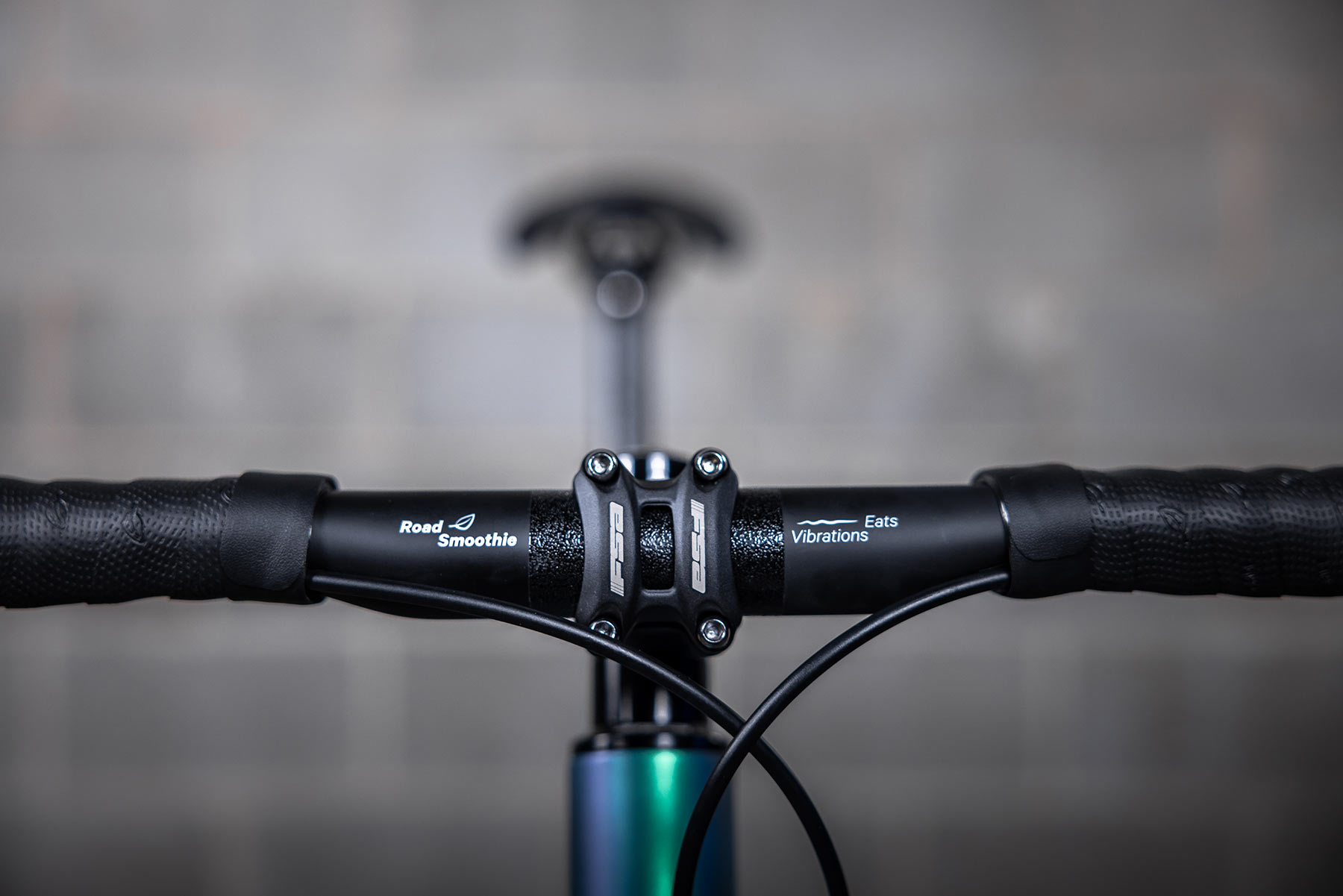
The Lauf Úthald comes in three builds ranging from $3,490 to ~$7,500, with the lower two available to order now and shipping in January, and the top end model available in Summer 2024. All three get the Road Smoothie handlebar.
The Weekend Warrior ($3,490) comes with SRAM Rival AXS w/ spindle power meter, DT Swiss E1800 Spline 23 wheels, Fizik Aliante R5 saddle, and Maxxis High-Road 170tpi tires. Claimed weight is 8.78kg (19.36lb) for size medium.
The Race ($4,690) upgrades to Force AXS with spider (dual leg) power meter, Zipp 303 S wheels. Claimed weight is 7.95kg (17.53lb).
The Ultimate model will get, um, what comes after Force and hasn’t been updated for several years and can’t be listed until next summer? Yeah, it’ll get that.
All bikes will be assembled in and shipped from their US HQ in Virginia. Standard paint is Obsidian Black, and Rubus Red adds $190 and Borealis and Thingvellir Sky adds $390.
Stay tuned for a first ride review…
